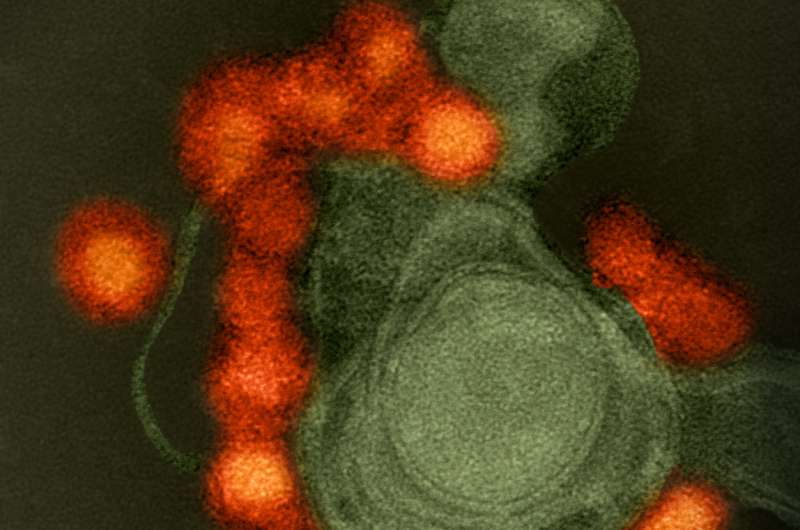Stopping Zika from crossing the placenta

Although the World Health Organization ended its global health emergency on Zika last November, the virus could still make a comeback as temperatures get warmer and mosquito season ramps up. Over 5,000 cases have been identified in the U.S. over the past two years, including about 1,500 pregnant women, and 70 countries have reported evidence of Zika transmission. It is a particularly insidious virus because it can cross the placenta and cause birth defects. Now, researchers may have figured out how this virus invades the placenta, and they are taking steps to develop strategies that block its access.
The researchers will present their work today at the 253rd National Meeting & Exposition of the American Chemical Society (ACS).
"We worked on the dengue virus 20 years ago, and when Zika popped up in the news, we knew immediately that the two mosquito-borne viruses were related members of the flavivirus family," Robert Linhardt, Ph.D., says. In his team's previous work, the researchers discovered that the dengue virus could get into cells by binding to sugars. "Based on the similarity between the two viruses, we thought that maybe Zika did the same thing," he explains.
The Zika virus has a coating consisting of many copies of an envelope protein. This protein binds to particular targets on the surfaces of host cells, ushering the virus inside to replicate. To figure out the identities of the host-cell targets, Linhardt's team, led by graduate student So Young Kim at the Rensselaer Polytechnic Institute, mixed the envelope protein with sugars called glycosaminoglycans, which the dengue virus uses for this purpose.
"With a technique called surface plasmon resonance, we can monitor binding interactions in real time," Kim says. "We started with the sugar heparin, which is highly negatively charged, and saw very tight binding with the Zika envelope protein. This suggested that the binding was largely based on electrostatic interactions, as observed in dengue virus." In further experiments, the protein appeared to also have some sequence preferences.
As a next step, the researchers extracted sugars from human tissues—adult brain and placenta—and tested whether and how tightly the Zika envelope protein bound. They identified a particular placental sugar, chondroitin sulfate, which seemed to bind tightly to the virus, and this molecule may be the Zika virus' ticket into the placenta. The interaction between the envelope protein and sugars from porcine adult brain was weaker. "Adult brain is probably not the best tissue to model," Linhardt says, because the Zika virus is known to be particularly damaging to the fetus. "We are developing a fetal brain stem cell line to identify other fetal brain sugars that may be targets of Zika," he adds. To further validate the approach, the researchers are also collaborating with another group to study binding between sugars and live Zika virus.
In addition to answering basic questions about how Zika invades cells, Linhardt's group also wants to come up with a way to block the interactions between the virus and placental sugars, protecting the fetus from harm. In earlier work, the researchers developed a virus-killing nanoparticle coated in the sugar that the influenza virus uses to invade lung tissue. Giving the nanoparticle to mice prevented them from getting sick. The researchers are working on a similar approach with the Zika virus.
The researchers are feeling a particular urgency to make advances as soon as possible. "We think Zika is going to come back with a vengeance this summer," Linhardt says. "That's why we are working really hard to understand Zika as best as we can, as fast as we can."
More information: Host cell entry of Zika virus may be mediated by glycosaminoglycans, the 253rd National Meeting & Exposition of the American Chemical Society (ACS), 2017.


















